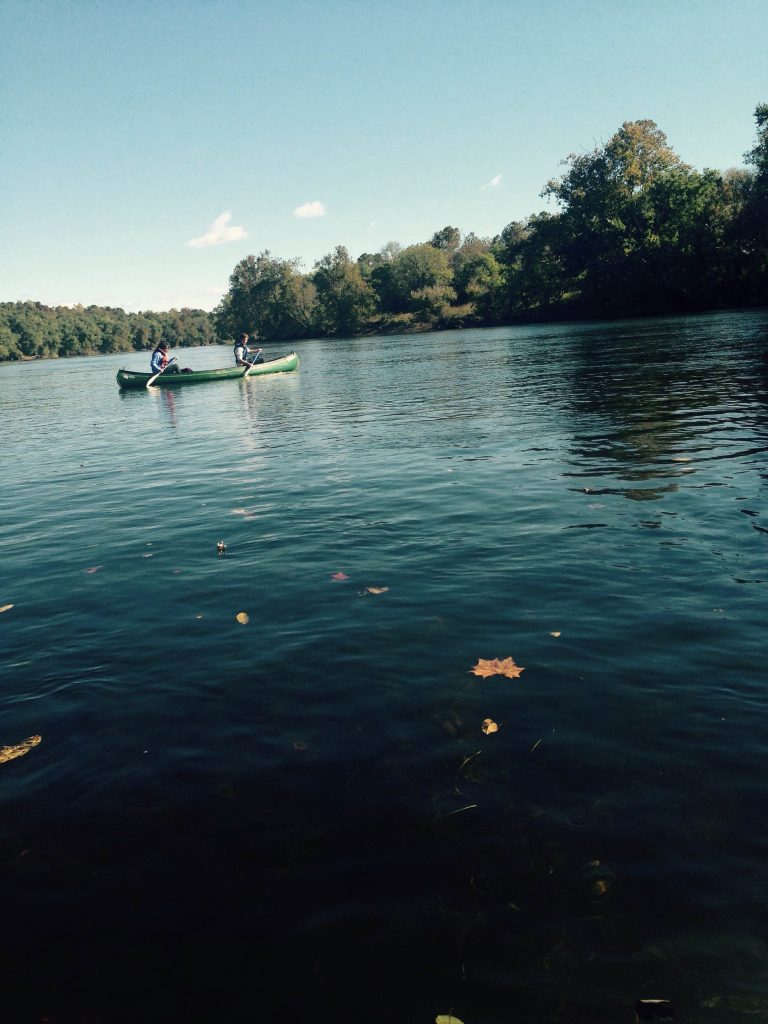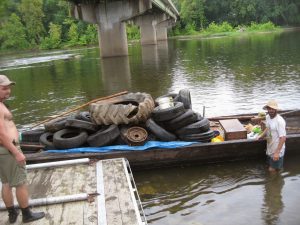As we pull into Howardsville ready to take part in efforts aimed at keeping the James River tireless, a question lingers in mind- why would people dispose tires into the James such that their act would necessitate this kind of a cleanup? This is a thought that seems rather absurd to imagine of. For once, I am a little skeptical about finding any tires once we set out in the waters.
As we set out on our canoes floating downstream, the river’s features are very limpid. The waters are very clear contrary my earlier expectations, the channel is relatively broad and a
variety of riparian vegetation including sycamores, river birches, and white oaks line the banks. The eroded banks of the channel are also easily discernible most probably due to the recent flooding, and a significant number of riparian trees have fallen into the river.
Two miles down the river and having not spotted a single tire, my hopes of finding any tire escalate. I am still trying to wrestle with the thought of why people would dispose tires into the James that would foster an environmental concern. However, no sooner had we floated a few more feet downstream than McKenzie and I spotted eight tires submerged in shallow waters near the muddy left bank. With utter excitement, we get off the canoe and pull the tires off the river channel scrapping the dirt inside them and loading them onto our canoe. Behind us a flotilla of batteaux provided by the James River Batteau Festival follow collecting tires from our canoes. As we stack tires onto the batteaux, I begin to
realize the gravity of the issue at hand. In a stretch of the river of less than one mile and while primarily focusing on the left bank, we collectively retrieve more than fifty tires. The batteaux are so full that they cannot hold more tires. We are forced to transport some of the tires by road to the collection point in Scottsville. This definitely starts to hit me as a call for concern.
Research shows that formulations and chemical compounds used to make tires get released into water systems when tires are disposed in water channels. These substances are potential carcinogens. Tires also block pathways of aquatic animals and may disrupt breeding or forage grounds. This results to unnecessary disturbances in ecological systems.
As we unload the batteaux in Scottsville, I cannot help notice the elation on people’s face as they celebrate their long-day efforts. At once, I learn that the activity was not only about pulling tires out of the river but also connecting people with the James for them to realize the importance of environmental stewardship and conservation.
References:
- http://www.calrecycle.ca.gov/publications/Documents/Tires%5C43296029.pdf
- http://www.richmondoutside.com/2016/09/make-the-james-river-tire-less-on-october-1st/
- http://www.roseofnelson.com/



Awesome post, Michael!